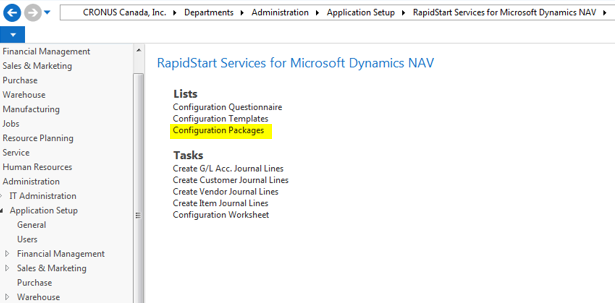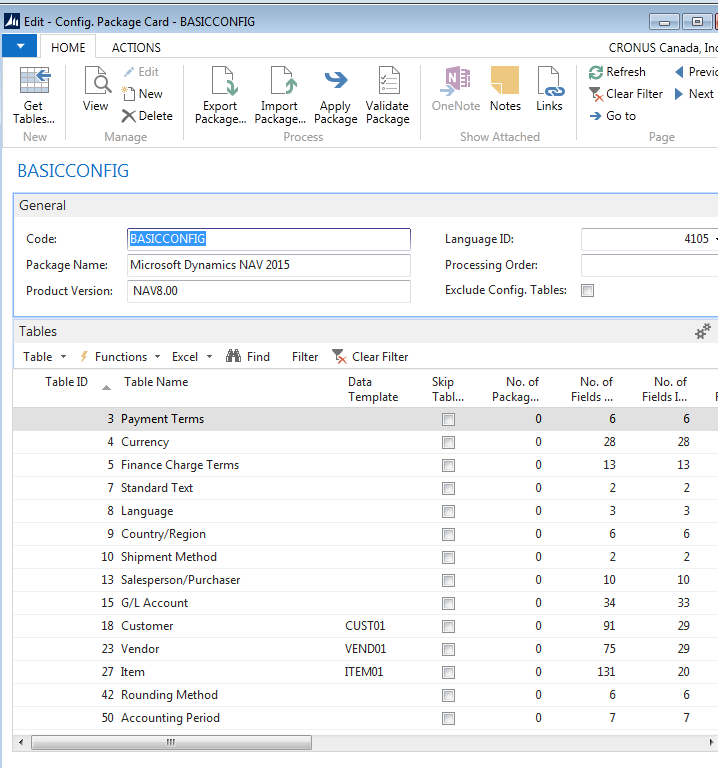One of the most underutilized features of Microsoft Dynamics NAV is the Rapid Implementation Methodology (RIM) tool. The purpose of the tool is to help clients convert data into NAV themselves, without paying a programmer to write conversions. The RIM tool comes with the ability for the user to create Configuration Packages.
Data will be imported into or exported out of a file or group of files within each package.
By editing the package, the user can view, add, or delete files from the package.
Within a package, it is normally recommended that the client setup one record manually and then export the data. This will create a spreadsheet that can then be populated and imported back into NAV. By creating one record manually, it is easier to identify where data is to be entered into the spreadsheet.
While the RIM tool was designed to allow clients to import data at the beginning of an implementation, the tool can be used after that for exporting data or importing additional data into tables. Sometimes there may be a need to import a group of items or customers from an electronic source, and the RIM tool can assist in those imports. NAV will not allow for the importing of posted information, so when importing history, for example, it must be imported as an un-posted transaction and then posted within NAV.
For additional tips and tricks regarding Dynamics GP and ERP products, visit our blog.










